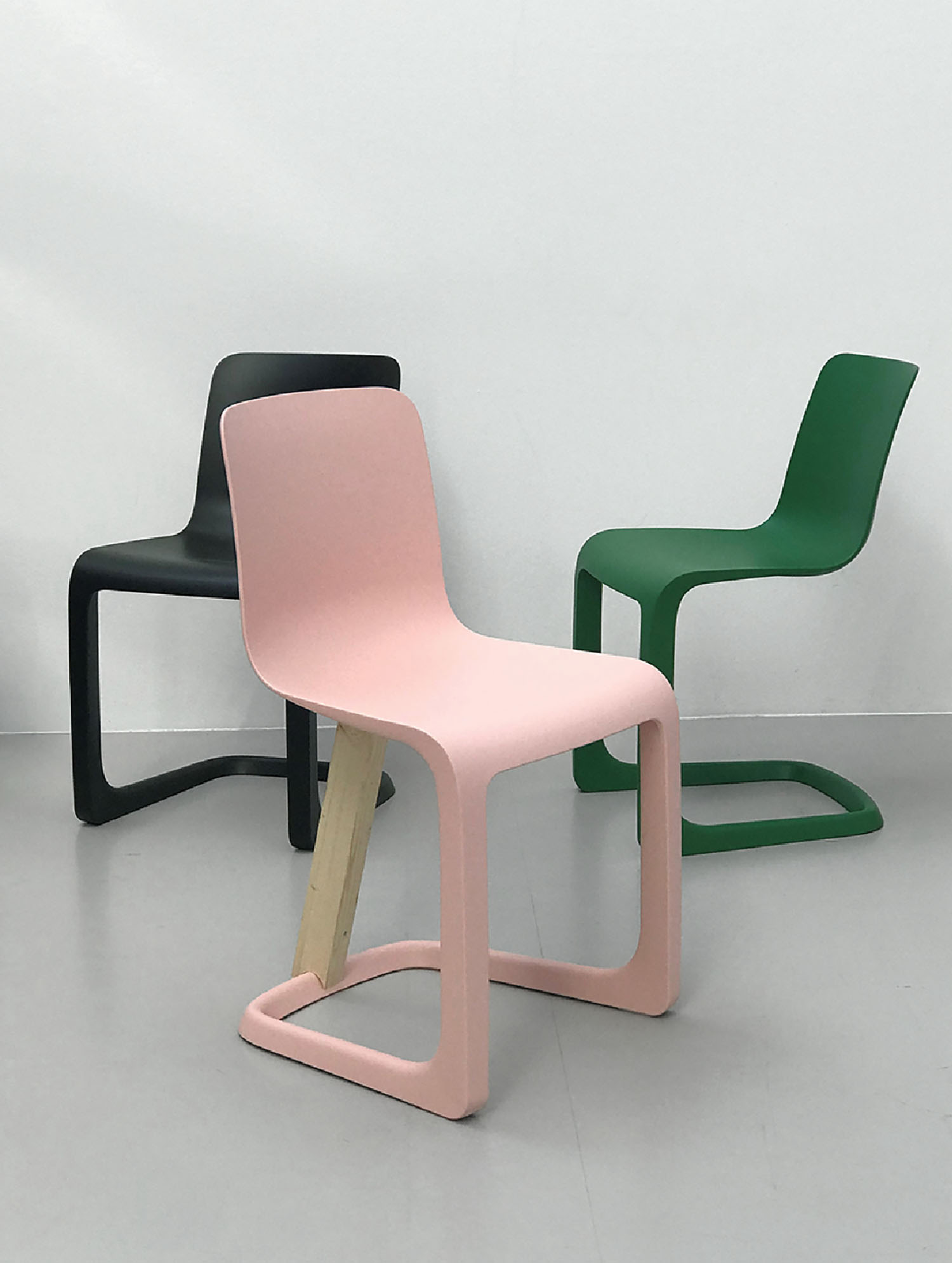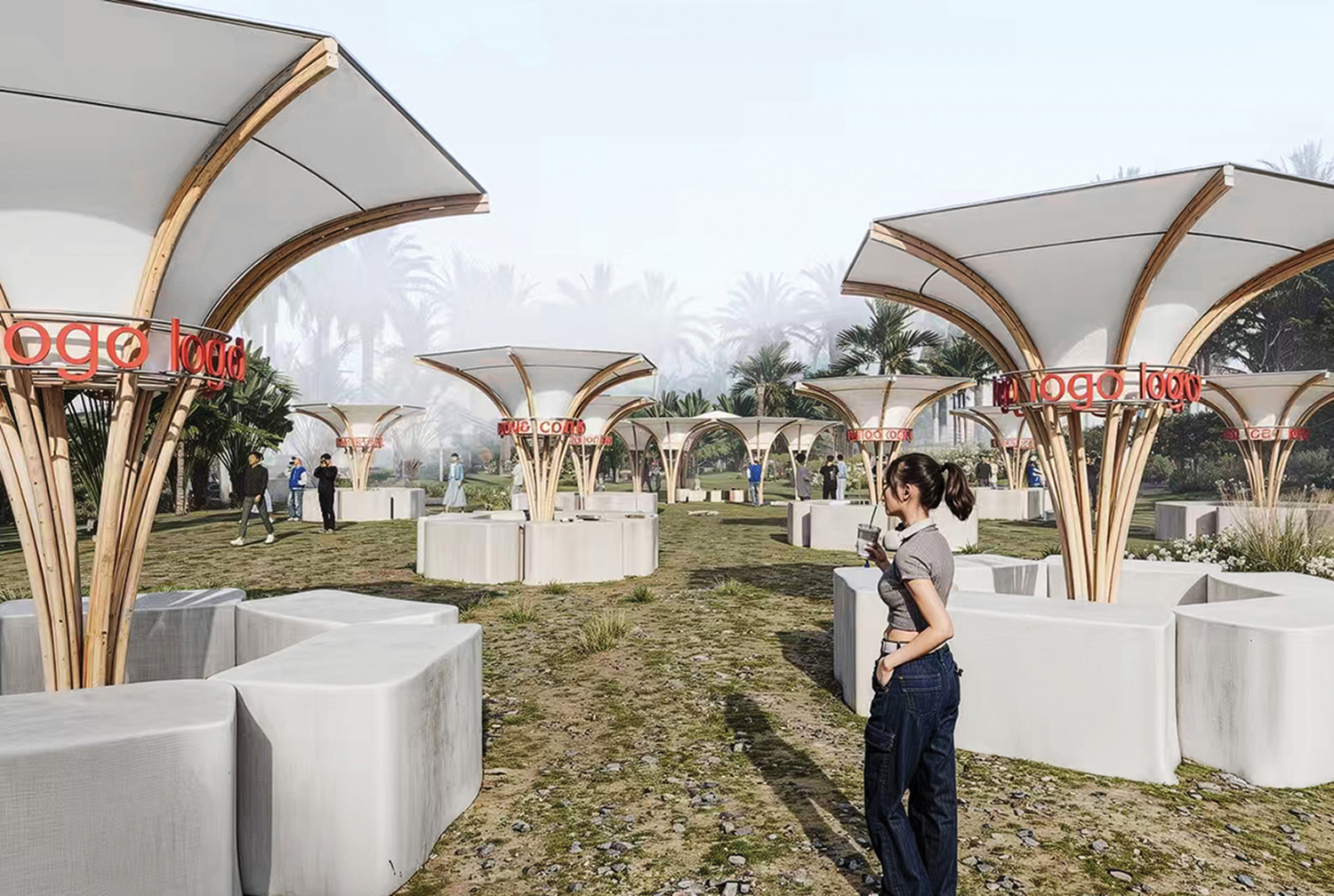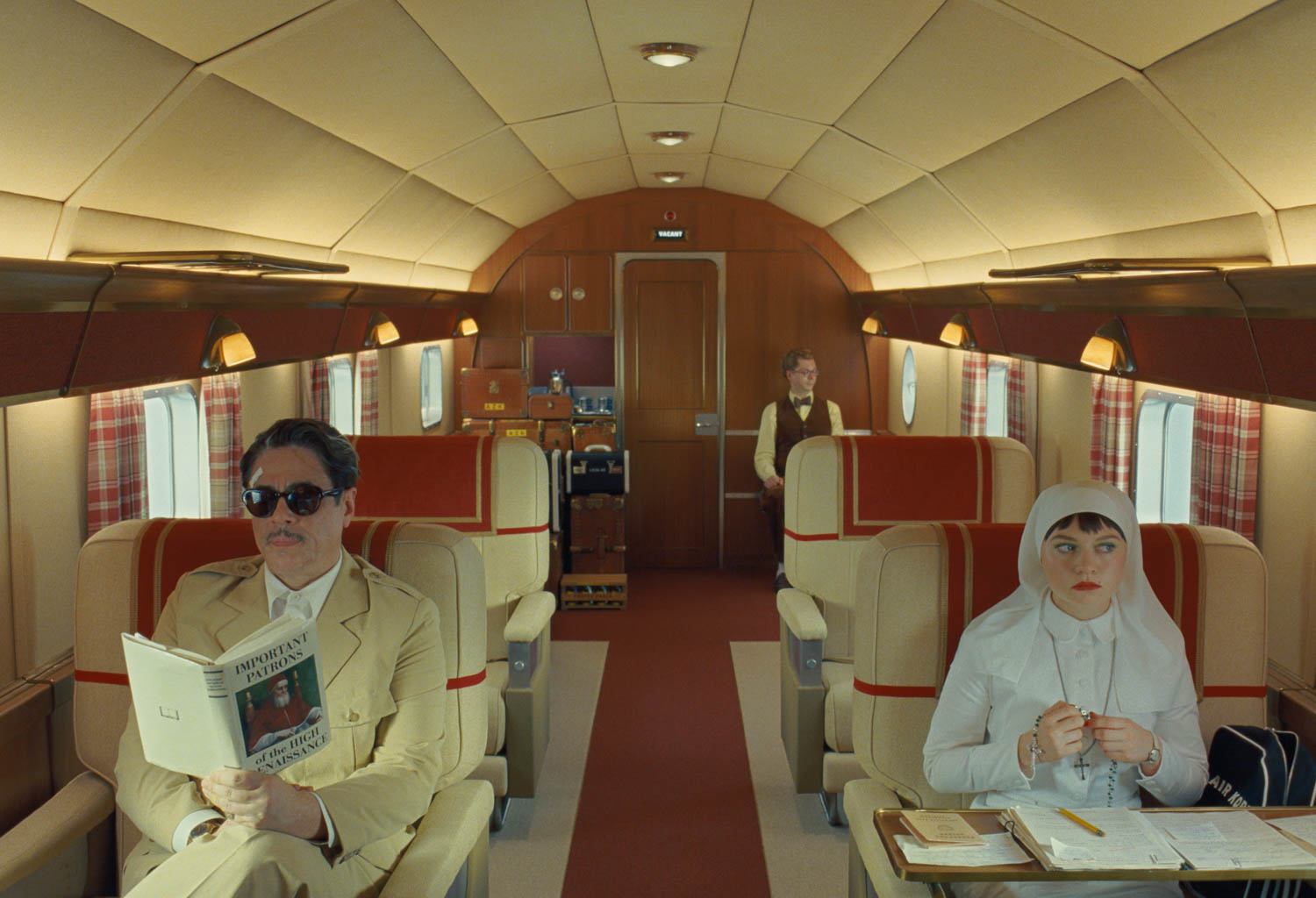10 Questions With… Suchi Reddy of Reddymade
 Suchi Reddy founded the award-winning firm, Reddymade Architecture and Design in 2002. Reddy, who was born and raised in Chennai, India, is passionate about neuroaesthetics, the study of how built environments affect us—something that designers have intuited for years that is now being proven by science. Last year, Reddymade teamed up with the International Arts + Mind Lab at Johns Hopkins University, Google, and Muuto to create a collaborative exhibit called, A Space For Being, for the 2019 edition of Salone del Mobile. More recently, Reddy is being acknowledged for her talent and positive innovations in a recent Eileen Fisher campaign, Good Goes On. And in addition to tackling a couple of residential projects, Reddymade currently is completing 30,000 square feet of amenity space for a condo project in Florida designed with Karl Lagerfeld and working on public art installations in Canada and Washington. “Form follows feeling” is Reddy’s mantra and she recently sat down with Interior Design to tell us all about it.
Suchi Reddy founded the award-winning firm, Reddymade Architecture and Design in 2002. Reddy, who was born and raised in Chennai, India, is passionate about neuroaesthetics, the study of how built environments affect us—something that designers have intuited for years that is now being proven by science. Last year, Reddymade teamed up with the International Arts + Mind Lab at Johns Hopkins University, Google, and Muuto to create a collaborative exhibit called, A Space For Being, for the 2019 edition of Salone del Mobile. More recently, Reddy is being acknowledged for her talent and positive innovations in a recent Eileen Fisher campaign, Good Goes On. And in addition to tackling a couple of residential projects, Reddymade currently is completing 30,000 square feet of amenity space for a condo project in Florida designed with Karl Lagerfeld and working on public art installations in Canada and Washington. “Form follows feeling” is Reddy’s mantra and she recently sat down with Interior Design to tell us all about it.
Interior Design: When did you know that you wanted to be an architect?
Suchi Reddy: I knew that I wanted to be an architect at the age of seven or eight. I had this kind of strange sense that I was different than my friends because of the way my house was. I can’t tell you what gave me that specific epiphany, but I was sensitive to it for a long time—it was a very early instinct.
ID: What are your biggest influences?
SR: My biggest is the house I was raised in. It was designed by an architect, P.S. Govind Rao, which was actually unusual for those days. It was a really interesting house with a courtyard in the middle and a large space that my mother ended up roofing. It opened to gardens on four sides. It had this very interesting quality of the flowing of space around a nucleus—which was kind of a formative thing for me. I am always searching for feelings of flow in my projects and working from there.
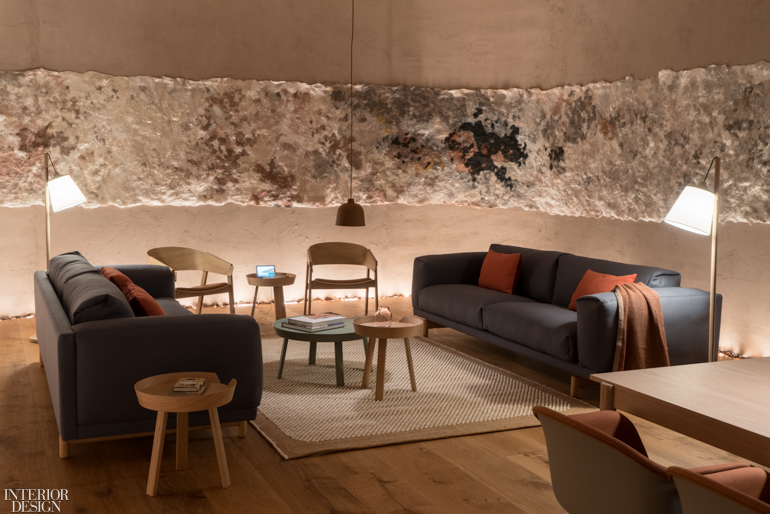
- Reddymade collaborated with Google, the International Arts + Minds Lab at Johns Hopkins University, and Muuto on the Salone 2019 exhibition A Space For Being. Photography © Maremosso.
ID: How did you get into neuroaesthetics?
SR: It was about 10 years ago when I first heard the term on the radio and I was really intrigued because I am really a science geek on the side. I wanted to know how this would be a field that would affect what I do, so I started looking into it. It’s been such a wonderful journey to see what scientists are doing to figure out how aesthetics really affects us—which is what the study of neuroaesthetics is. It’s quite a broad definition because obviously aesthetics can be all kinds of things, from sensory design to purely two-dimensional aesthetic experiences, to VR experiences etc, there is a lot of research going on between all of those vectors and it has been fascinating to think about how all these things can affect us as design and how that can be a new design tool. I am not such a stylistically driven person. I am a modernist. People come to us for a certain kind of warm, serene, modern design. Neuroaesthetics reflects who they are. It makes it kind of imperative to me to understand how space and design makes our clients feel a certain way. Because my goal is really to make spaces that make people feel their best and function their best.
ID: “Form follows feeling” is the guiding principle of your practice. Discuss.
SR: My interest in neuroaesthetics caused me to crystalize “form follows feeling” as a guiding principle of my practice. Poetics in architecture is so important—and for me it became very clear that this idea that form doesn’t just function, form has to follow feeling. It was a crystalizing moment a few years ago when that came to me.

- The Transformative Room—Reddymade collaborated with Google, the International Arts + Minds Lab at Johns Hopkins University, and Muuto on the Salone 2019 exhibition A Space For Being. © Maremosso.
ID: Last year you collaborated with Google, the International Arts + Minds Lab at Johns Hopkins University, and Muuto on the Salone 2019 exhibition A Space For Being. What did you learn from that experience?
SR: A Space for Being endeavored to measure people’s physiological responses to three different aesthetics and then interpret this data in a way that actually showed them the impact of design on their biology. The data was envisioned like a mandala, so you could look at it and see where your body most “at rest” or where something flared out. The data was reflected back in this beautiful way. Where you felt the calmest wasn’t always where you thought you were the most calm. We found a lot of variances—it was most interesting, but ultimately it was just to demonstrate the importance of design.
ID: How is neuroaesthetics informing the design of some of your current projects?
SR: It is something that has subliminally been part of my ethos. I haven’t used the word so much to explain things to clients, but anytime we are working with textures and creating some kind of soft experience, when we’re trying to modulate it and make it different from the experience that preceded it we’re certainly talking about all of the principles. We have a project, on 66th Street in New York’s Upper West Side, which is really about creating a sanctuary space, using textures and materials that give it a kind of acoustic quietness, trying to make it feel very open. These kinds of things all follow neuroaesthetic principles—looking at directions of light, colors of light, what kinds of light, these kinds of things run through all of our projects. As far as projects that are specifically geared toward neuroaesthetics—we created a prototype for a healing room with the IAM lab at Johns Hopkins and we also designed a house that specifically focuses on neuroaesthetics.
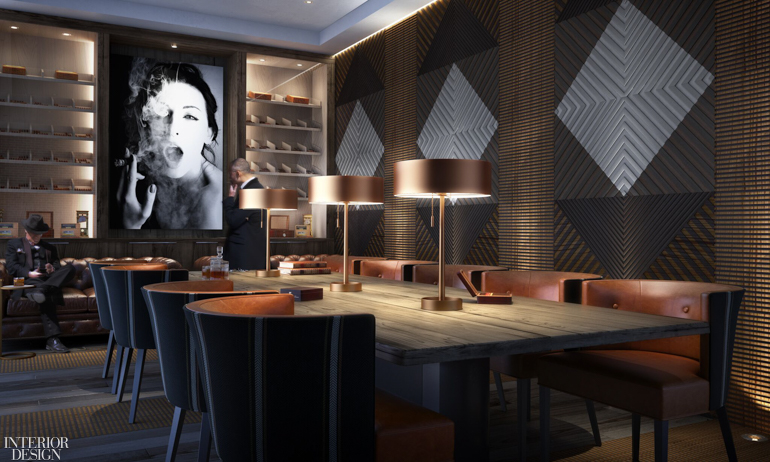
- A rendering of the Cigar Room of The Estates at Acqualina, one of the amenity spaces in the Miami condo project designed with Karl Lagerfeld. Image courtesy of ARX Solutions.
ID: You are in the recent Eileen Fisher campaign, Good Goes On, which features women who are making a positive impact on their communities across a variety of disciplines that reflect three of the EF brand pillars – Design, Sustainability and Women’s Leadership. What are your thoughts on the brand?
SR: When I first moved to New York 25 years ago as a young architect and saw Eileen Fisher’s clothes, I was really drawn to the cleanliness of lines and ease with which the fabrics moved around me. She has always been someone whose ethos I respect a huge amount. Everything is done with so much integrity from start to finish and you can see it in the product, there is nothing inessential about it—it is a good match for architects.
ID: Yvonne Farrell and Shelley McNamara just won the Pritzker Prize. What do you think this means for women in the field?
SR: I’m very, very happy about it. It’s really about time that this happened. I was also very happy in 2018 when Balkrishna Doshi from India won, it was also very important for architecture that is generated from different cultural influences to be recognized. Farrell and McNamara’s Biennale was amazing. There is a different softness to the way they present architecture, the way they discussed architecture in the Biennale, and the theme that they curated.

- West 66th Street Residence by Reddymade. Photography by Ball & Albanese.
ID: Although, most people are currently putting their travel plans on hold, what is your favorite travel destination and why?
SR: Anywhere! I like the process of being somewhere else and the perspective it gives me. Every place is interesting. Design is always interesting; it fascinates me, and I have the same attitude towards travel. I also enjoy traveling somewhere—because it tends to be my quiet time and I also enjoy that.
ID: What’s up next for Reddymade?
SR: Hopefully, we are coming into one of our most creative times ever, I am looking forward to continuing our track of diverse projects and really exploring lots of different kinds of subjects—everything from neuroaesthetics, to prefab construction, to art.

- West End Avenue Townhouse by Reddymade. Photography by Colin Miller.

- Manhattan Avenue Townhouse. Photography by Seth Caplan.
Read next: How Eileen Fisher Doubles Down on Environmental Stewardship
